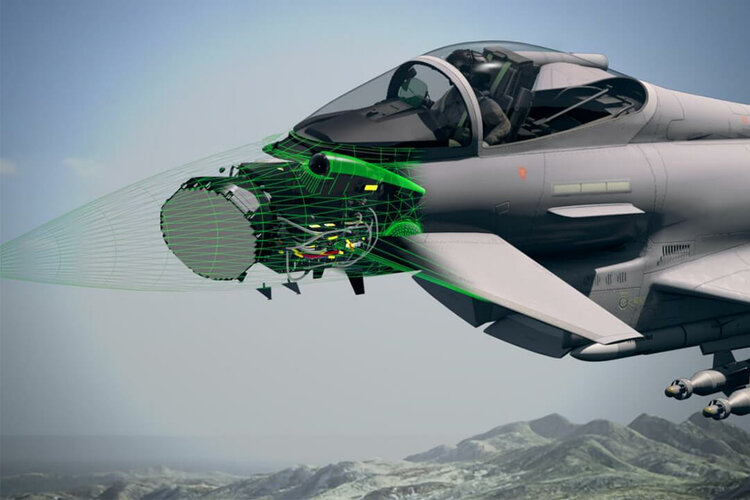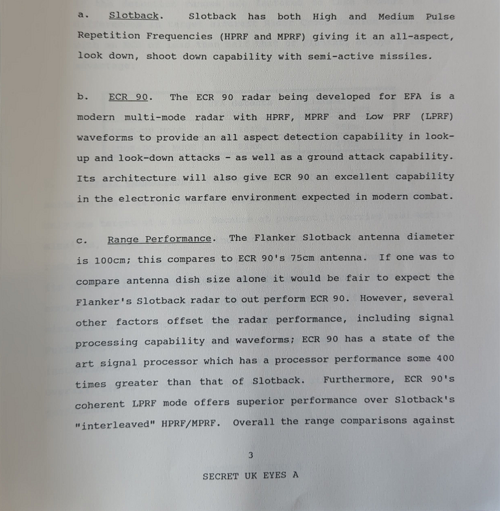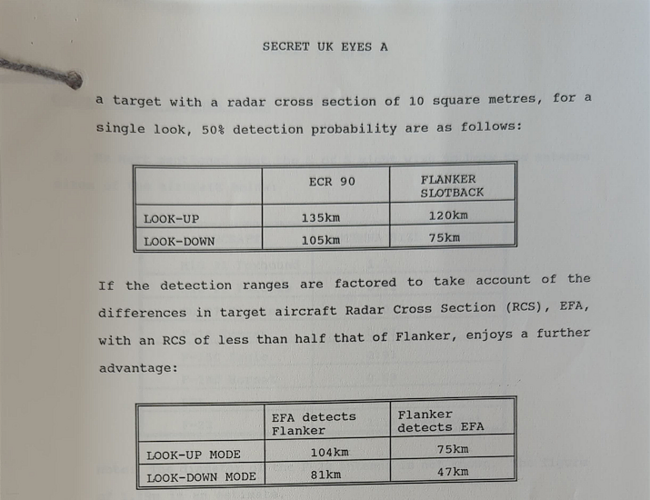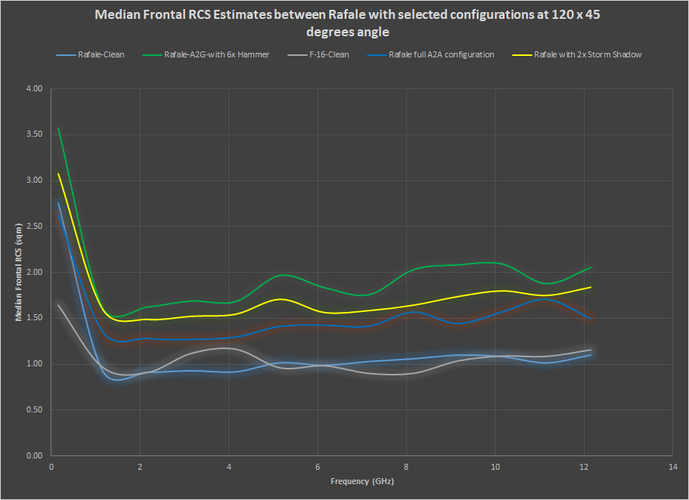- Joined
- 27 December 2005
- Messages
- 17,705
- Reaction score
- 26,104
Thread for Typhoon avionics
EF2000/IRST
TECNOBIT forma parte junto a GALILEO AVIONICA y THALES OPTRONICS del consorcio EUROFIRST que desarrolla el sistema FLIR/IRST del Eurofighter.
Este sistema, denominado comercialmente PIRATE, constituye el estado del arte en este tipo de sensores.
PIRATE aúna a las capacidades típicas de visión por Infra-rojo la capacidad de detección y seguimiento automático de múltiples blancos, esto es, actúa como un radar, pero sin necesidad de emitir señal alguna con lo aumenta significativamente la capacidad "stealth" del avión y su superioridad en el combate.
PIRATE es capaz de realizar un seguimiento automático de más de 500 blancos simultáneamente y de detectar aviones a distancias superiores a 74Km.
TECNOBIT participa en otros programas IRST nacionales que desarrollan esta tecnología en otros campos.
Its seems that the Euro-fighter partner nations have finally got together and signed a development and integration contract for the AESA radar for the Typhoon.
Details are a little thin on the ground but its seems likely that the RAF will be the first force to take delivery of the Captor E Scan radar.
One of the key features of the Captor E scan radar is supposedly incorporation of the Electronic Attack Capability pioneered in the Bright Adder Radar.
A Typhoon carrying SPEAR 3 missiles with the Praetorian DASS and Captor E Scan should give the aircraft a fairly potent capability against enemy air defences and hopefully go some way to offset the capability gaps left with the retirement of the ALARM missile and Tornado.
PaulMM (Overscan) said:Typhoon MHDD (Smiths Industries)


Italian Tranche 1 manual with some radar stuff


Here is some details on the performance of the Eurofighter's ECR-90 radar compared to the Su-27's Slotback radar. The comparison comes from July 1992, so the Eurofighter / radar was still under development at that point:
View attachment 705708
View attachment 705709
The pages come from the National Archives DEFE 71/1487 Eurofighter Aircraft: AST 414 equipment and weapons
There was a statement a while ago that the RCS of the Eurofighter was 4x less than the Tornado which was 8sq meters so 2 sq meters. Stealth Warplanes by Doug Richardson estimates 2 square meters. So 1.5 is pretty consistent with what I’ve seen to date.
If the Slotback of the Su-27 detects a 10 m2 RCS target at 120 km, then the Eurofighter's RCS should be about 1.5 m2 to be detected at 75 km.
10^0.25 : x^0.25 = 120 : 75
x^0.25 * 120 = 10^0.25 * 75
x^0.25 = 10^0.25 * 75 / 120
x^0.25 = 1.1114
x = 1.5259
Similarly, if the Eurofighter's radar detects a 10 m2 RCS target at 135 km and the Su-27 at 104 km, the Su-27's RCS should be about 3.522 m2.
It’s probably notional, they might now have had much occasion to really examine on by 1993 and assumed a worse case.1.5 m2 sounds reasonable for Eurofighter, but I thought the Su-27 was meant to be quite a bit bigger than 3.5 m2? I've seen numbers around 10 - 15 m2 quoted for the Su-27 online.

1.5 m2 sounds reasonable for Eurofighter, but I thought the Su-27 was meant to be quite a bit bigger than 3.5 m2? I've seen numbers around 10 - 15 m2 quoted for the Su-27 online.
via Rochester Avionics ArchiveThe Eurofighter Typhoon was first released in 2004 and is equipped with a fiber optic data bus called Stanag 3910. This bus is used for all mission critical systems and had flown for over 100,000 flight hours af of January 2011. This databus utlizes a TDM multiplexing scheme and a datarate of either 1 Mb/s or 20 Mb/s. The incomplete nature of the standardization process (as of Aug. 2013) has not prevented at least two versions of STANAG 3910 being implemented: one for the Eurofighter Typhoon and one for the Dassault Rafale. The Eurofighter version, known as EFABus, is standardized by an internal Eurofighter document (SP-J-402-E-1039). There is also an extended version of EFABus, known as EFABus Express (EfEx). This was designed for tranche 2 of the Eurofighter Typhoon to reduce the time needed to set up the HS transfers by allowing them to be set up over the HS channel. This version is fully compatible with MIL-STD-1553 / STANAG 3838 and the mixed EFABus (STANAG 3910).
Motorola 68020 is a CISC processor not an ASIC.Multicore Processors To Transform Typhoon’s Mission Computing Power | Aviation Week Network
BAE Systems is to flight-test a Eurofighter Typhoon equipped with multi-core computer processors as part of ongoing efforts to redesign the fighter.aviationweek.com
Were there other mission computers based off of CISC? Most of what I know were ASICs (T1 Typhoons had Motorola 60820s for example) or RISCs (US 5th gens used to use Power, don't know what the newer computers like TR-3 are based off of).
You're right. I've cited a faulty source.Motorola 68020 is a CISC processor not an ASIC.
I wonder if LTE will finally see the Eurofighter avionics architecture revamped from current federated structure into IMA, since new mission computing and software is mentioned as one of the key focuses. T2 to T3 hasn't seen much fundamental changes due to cost reasons, although 5 computers were upgraded from T1 to T2 (attack/tactical computer, symbol generator, interface processor unit, navigtaion and MIDS interface unit). Currently, Gripen E/F and EF Typhoon are the only two modern western fighters still using federated avionics.
